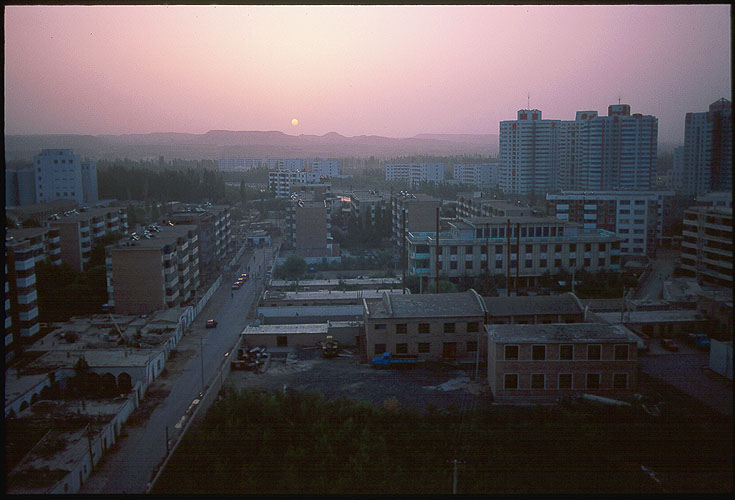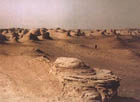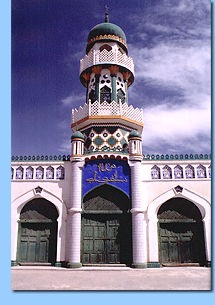|
|
|
| Qumul-Korla | |
|
Uyghur Photo Site |
Site Manager |
Contact Page |
Information |
In the World |
Kashgar-Atush |
Turpan |
Urumchi-Qaramay |
Qumul-Korla |
Hoten-Aksu |
Ili-Altay |
Kucha |
People |
Culture |
Nature |
Favorite Links |
Uyghur Photo Guest Book
|
|
|
Here are some information about Qumul and Korla |
|
 Korla Korla City |
|
 Ruin of Ancient city Kroran The ancient State of Kroran was a state established in the Uyghur Regions in ancient times. It was in the western bank of Lop Nur, an only route by which to pass the Ancient Silk Road. In those days, around Kroran city there were criss-cross networks of waterways, shades of green tress, row upon row of houses, crowds of merchants and travelers doing brisk trades. But what makes people at a loss to account for is that such a city once with a population of thousands, its business economy fully developed, suddenly disappeared from the history after several prosperous centuries. The rise and fall of the ancient State of Kroran has all along presented a baffling mystery to us. The ancient State of Kroran was completely submerged by the desert. It was in the early part of this century that Uyghur Guide Ordek, with Sven Anders Hedin, a Swedish explorer, had found this ancient city of Kroran during his desert exploration to Lop Nur in Uyghur Region. Immediately after the news was spread out, the world academic circles were greatly surprised and so people could see the historical relics of the ancient Kroran for the first time. At the beginning of 80's in this century, the archaeological team formally carried on archaeological investigations and unearthing work at the ancient city of Kroran . They found a great number of historical relics in the ancient city of Kroran and also some historical remains of ancient waterways, farmlands, Buddhist pagodas and graves. The culture of the ancient Kroran has reappeared in the world. The ancient Kroran city on the western bank of Lop Nur is located at 40°9' north and 89°5' east. This city is about 300 square meters, covering the space of 108,240 square meters. Now from the surface of the ground you can still see the remains of the city walls clearly, and especially the city wall on the south has been better preserved. Inside the city, all the buildings are collapsed, the roofs and wood posts of the buildings fallen apart on the ruins with one up on the other. On the ground there are broken potsherds, wood plates and wooden bowls everywhere. |
|
 Bostan Lake Fifty-seven kilometers north of Korla city and under the jurisdiction of Bostan county, Bosten is the biggest freshwater lake in Uyghur Region, covering an area of 960 square kilometers. On the banks of the lake grow luxuriant and dense reeds, and a great variety of fish, such as bighead, blunt-snout bream, crab and shrimp, live in its waters. Bosten Lake is the summer resort of Korla area, since the temperature here in summer is much lower than that of the urban area. |
|
 Mosque in Qumul |
|
 Coming soon |
|
 |
|

|
|